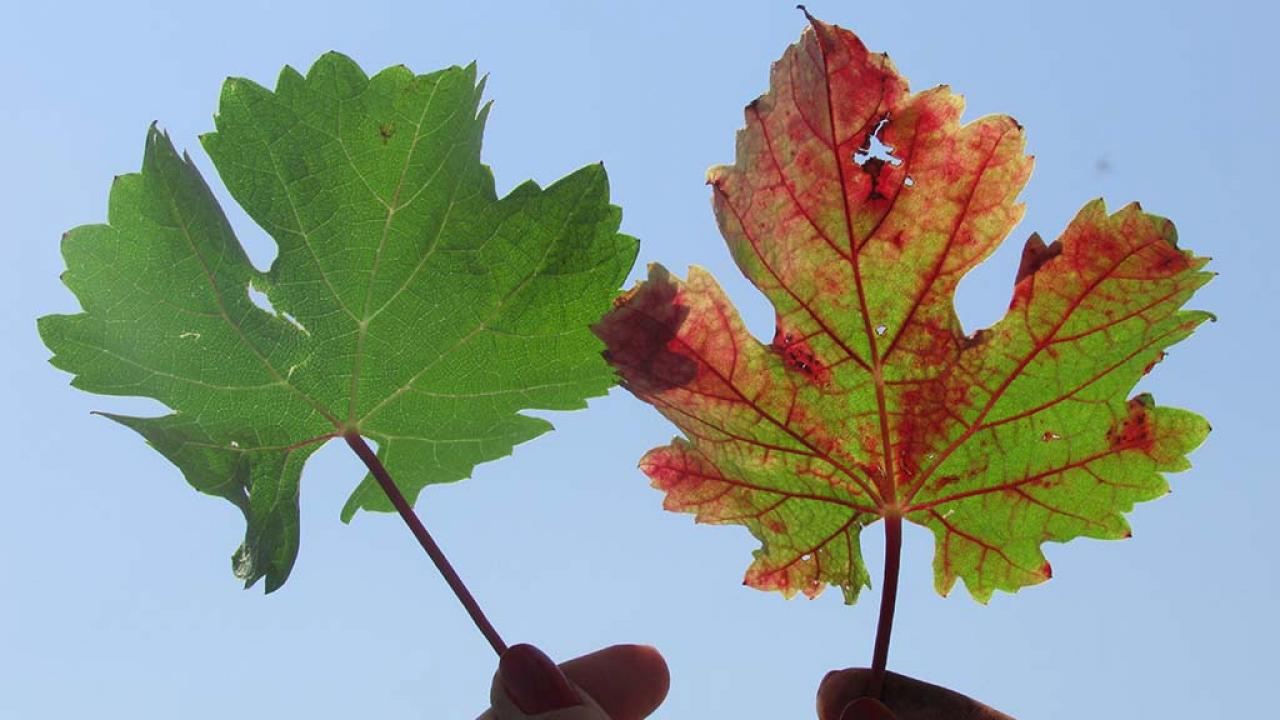Quick Summary
- No treatment for deadly grapevine red blotch disease
- 4-year grant will allow study of disease spread, economic impact
- May be more than one vector of red blotch
University of California, Davis, scientists will lead a collaborative effort to study grapevine red blotch disease, which threatens the $162 billion U.S. grape industry. The virus causes red veins and blotches on grape leaves. The fruit on diseased plants is smaller, ripens more slowly, and its sugars and colors are muted.
“The virus affects both white and red grape varieties and can have a significant impact on wine quality,” said Anita Oberholster, cooperative extension specialist in the UC Davis Department of Viticulture and Enology and the project director for the research. First noticed in 2007 at the UC Davis Oakville research station, the virus wasn’t identified until 2012, and much remains unknown about its causes or ways to manage it. Currently, the only treatment is to remove the entire vine.
In 2016, Frank Zalom, a UC Davis professor of entomology and nematology, and collaborators discovered the three-cornered alfalfa hopper was a vector of red blotch, but it may not be the only one. The disease has been detected in California, Oregon and New York.
The $3 million USDA-NIFA grant will allow UC Davis, UC Berkeley and Oregon State University researchers to examine the spread of the disease, potential vectors and assess its economic impact on grape production and wine quality.
“Red blotch is a huge new problem for the grape industry, and this is the first large government grant to study it,” said Oberholster. “We will be working in partnership to take the first steps to understand the disease and develop sustainable management practices to support the grape industry.”
Media Resources
Amy Quinton, News and Media Relations, 530-752-9843, amquinton@ucdavis.edu
Anita Oberholster, Department of Viticulture and Enology, 530-754-4866, aoberholster@ucdavis.edu
